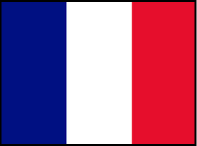Paris
Day 6


Our alarm sang to us at 5:30 but both of us were awake. Taxi came at 6:15 and we were at the RR station by 6:30. Train was late leaving which is very rare. Through the countryside we rumbled.
Rain all the way and got harder as we went north. Exited at Bayeux where our guide, Guillaume, greeted us with a big smile and in the windy cold said, “Welcome to Normandy.”
He works for himself (most guides work for guide companies) so he has to be excellent to survive and he is. National Geographic has hired him for 5 days next week. He also toured Cris Collinsworth and his family.
We toured the American Cemetery where almost 10,000 Americans were buried and more than that were shipped home to be buried. Among the graves three metal of honor recipients, brothers, brothers of the movie Saving Private Ryan, and a general. Most of the graves are identified. Also a wall listing those men killed but whose remains are not yet located is there – some recently have been located and marked with a black dot.
Some interesting facts-
1. They were 25,000 civilians killed in the invasion. The guide's family lived near the invasion and planes scraping the roads for movement killed his great grand mother.
2.First wave in the invasion had a 90% fatality rate.
3. Second wave 75%
4. A National Guard group from Bedford, VA was in the first wave from a small town and lost almost all its men.
5. There were 2 draws leading from the beach which the Seabees started to build roads (where there previously were none), clear fields for a air field and build a huge field hospital on top of the bluff (the day after the invasion). The roads are still used today.
6. Oil tankers to support the troops left from Houston 45 days before the attack.
7. All uniforms were alike and only the officers wore white stripes on helmets noting they were officers. A mistake, as the Germans figured that out and snipers killed almost all of them early in the battle.
8. All previous invasions by the Americans were done at high tide but, Normandy was done at low tide exposing the military hedgehogs. They were the metal “X's” on the beach you see in the troops' landing videos.
9. The cemetery is located very close to the beaches
10. Among the troops that landed were troops from France's colonies, which is the first time in history that colonies helped liberate the mother country (most of France's army was killed before the invasion).
11. Still today militaries from most countries come to study the invasion – a masterpiece of planning by Eisenhower and his staff.
We looked at Omaha beach - big white caps!
We also toured a museum (the one he said was the best) in which one person had collected all kinds of war related items left behind, and the visitor's center at the American Cemetery. Had a good lunch at a brasserie and also stood in a German bunker with the shell hit artillery gun inside.
Reflecting about our visit on the train on the way back to Paris:
Other than the weather, which was terrible (truly -cold, rainy and a blistering wind) the tour was wonderful. We were not outside as much as on a normal tour day (Omaha Beach had ocean high waves) but we saw and learned a lot. Guillaume was amazing - so knowledgeable. It was an awesome tour!! It's just amazing how much was involved in planning and execution and then occupying - more than we can comprehend back in the US. The bravery and sacrifice of that generation - all - not just Americans.
They love Americans in Normandy!
We are coming back to visit the other beaches where the Canadians, British and others landed.
Highly recommend a visit here.
Click on a picture below to view a slide show
Click on right side arrow to advance a side
Click on left side arrow to go back a slde
To end slide show click on x located on upper right or esc key on your keyboard